Eric Hibit
"I’m interested in artificiality. I suppose this stems from my experiences as a gay man and my interest in camp culture."
Eric Hibit (born Rochester, NY) is a visual artist based in New York City. He attended the Corcoran College of Art + Design (BFA,1998) and Yale University School of Art (MFA, 2003). In New York, he has exhibited at Brooklyn Museum, Morgan Lehman Gallery, Dinner Gallery, Deanna Evans Projects, My Pet Ram, One River School of Art + Design, Tiger Strikes Asteroid, Underdonk Gallery, Ortega y Gasset Projects, Zurcher Studio, C24 Gallery, Anna Kustera Gallery, Max Protetch Gallery, and elsewhere. He has exhibited nationally at Hexum Gallery in Montpelier, VT, Weatherspoon Art Museum in Greensboro, NC, Wege Center for the Arts at Maharishi University in Fairfield, IA, Adds Donna in Chicago, Curator’s Office in Washington, DC, Geoffrey Young Gallery in Great Barrington, MA, The Cape Cod Museum of Art, Satellite Contemporary in Las Vegas, NV, The University of Vermont, Bedford Gallery in Walnut Creek, CA and internationally in Sweden, France and Norway. His work has been covered by the Washington Post, The Village Voice, Hyperallergic, Newsweek, New York Times and New York Post. Hibit has taught studio art at Cornell University, The Cooper Union, Drexel University, Suffolk County Community College, Tyler School of Art, NYU and Hunter College. Artist residencies include Terra Foundation in Giverny, France (2003), UNILEVER Residency in New York (2015), and Kingsbrae International Residency for the Arts (2019) and Green Olives Arts in Tetouan, Morocco (2019). Publications include Dear Hollywood Writers, with poet Geoffrey Young (Suzy Solidor Editions, 2017) and Paintings and Fables with Wayne Koestenbaum, a limited edition artist’s book (2017), and Color Theory for Dummies, published by Wiley (2022). He is currently Co-Director of Ortega y Gasset Projects, an artist-run gallery based in Brooklyn, where he has curated exhibitions since 2014.
MEPAINTSME: I like to start off asking about a little personal history. Where are you from originally? What did your parents do? Were you always intent on making art?
Eric Hibit: I was born in Rochester, NY. My parents are from nearby Buffalo, NY. They moved to Rochester because my father worked for Kodak (which was, and still is, headquartered in Rochester). One of Rochester’s nicknames is “The World’s Image Capital” from a time when the photographic industry was centered in Rochester. I can’t help but think that my proximity to the imagining industry (albeit photographic) had some effect on my choice to go to art school. My grandparents lived in Wyoming county, just south of Rochester. It’s a beautiful part of Western New York: rolling hills, farms, and forests. So I had a lot of exposure to nature as a kid. My grandparents had a huge vegetable garden. They grew shitake mushrooms on logs in a shed on their property. My Mom was a hairdresser with her own business (she’s now retired). I inherited good business sense from her.
MPM: The intricacy and attention to detail in your work is pretty incredible. How long does it normally take you to complete a work from start to finish?
EH: I can finish a work in as little as two weeks, although it usually takes longer because I tend to work on several at a time.
MPM: Wow that’s surprisingly efficient!
EH: I give my work the time it needs to develop. Sometimes things take longer than expected, and sometimes less. It depends.
MPM: Outside of color and design, the primary feature of your work is texture, specifically your utilization of tiny ‘beads’ of paint. Can you talk a bit about how you arrived at this? Are these painted directly on the surface?
EH: I’m fascinated by texture because it characterizes paintings as objects, apart from painting’s imagistic nature. I often think about the “skin” of paintings: the layer of paint on the support and how thick or thin the skin is; how it is built up and how it reveals (or obscures) previous layers and/or the support. Most people look at paintings from far away, but I like to get up close and really gaze at the skin of my paintings. And I like to look closely at the skin of paintings that interest me. The skin of paint contains information about how the artist moved the brush and how the artist applied pressure. The skin of paint reveals mood, mindset, temperament - and intangible qualities that may be hard to express in words. the smooth skin of paintings by an artist such as Chason Matthams is a revelation into mindset and temperament.

EH: The paint skin is a sensory field. When I’m applying dots and creating texture I feel that I’m adding to that skin and creating a palpable and physical experience with paint. I use acrylic paint, which is essentially plastic. The word plastic means “shapeable”. My dots reveal the plastic quality of the medium and, I believe, speaks to the truth of the medium. Maybe I’m just an old-fashioned Modernist after all, searching for the “truth” of the medium! But of course, the synthetic quality of paint loops to my interest in the artificial (which I elaborate on below).
MPM: For me, part of the work's power is its immediate impact in terms of color and form, then upon closer inspection discovering the complexity and losing oneself within a work. Can you talk about this? Was this dichotomy always part of your work?
EH: I like paintings that reveal themselves more as you look. I can think of two of my early influences who made such work: Agnes Martin and James Rosenquist. They are very different artists, but they both made work that revealed itself the more you look, beyond the initial impact. I strive to achieve this depth in my work. I think my imagery draws viewers because it is relatable. And color is another access point. But I also want to create a sense of otherness: a sense of my paintings as being from outside a typical understanding of how something should be made, would best be made, or is usually made. My work is planned to some extent, but my process is never just execution. The process unfolds, and in the search for resolution, new elements enter the picture. This takes a lot of time and mental energy, but it's worth it because it imbues the work with the “depth of process” - so to speak. I spend a lot of time adding details and embellishing surfaces to push the work toward an end point that’s highly specific, refined, and farther away from what other artists do. At least that’s what I’m striving to do. I think a lot of viewers don’t fully grasp this because they look too fast. As an artist, my role is to create atypical objects. Can I offer something that slows a viewer down? Or, can I make something that’s not easily graspable in terms of how it’s made technically? How do I make a viewer stay with a work? And if they do stay, what’s there for them to experience? These are some questions I ask myself. The answers are in my work!
MPM: Given your use of bright colors, hard edges and repeated motifs, I can see how viewers might have trouble squaring your depiction of the natural world with such a cool hand, so to speak. I find this interesting. How do you feel about this dynamic in your work? Were these types of contradictions a conscious decision?
EH: I’m interested in artificiality. I suppose this stems from my experiences as a gay man and my interest in camp culture. When I was a little gay boy, I couldn’t fully express myself. I took refuge in the world of the imagination. I dreamed of becoming an artist and living in New York. So, early on there was a sense of contrivance and make believe. And I had an attraction to the humor and outrageousness of camp, such as Mommy Dearest, and the infamous Club Kid’s episode of Geraldo. So, the idea of naturalness always seemed impossible (and somewhat irrelevant) to me. Art was always about artificiality and make-believe. I think the hard edges in my work are from looking at the world in a certain style: with a heightened awareness of boundaries, and a strong sense of this being different than that. “Male is VERY different from female, and maleness never crosses into femaleness”: this is an extraordinarily camp - and very funny - statement! Of course this is not true, but camp plays into humor related to gender exaggerations and boundaries about gender. So, I suppose my interest in strong visual contrast and clear demarcations of edges as a painterly style is rooted in my taste for camp culture. On a side note: there are many examples from art history of extraordinary paintings made with sharp edges. I Saw the Figure 5 in Gold by Charles Demuth is one of my favorites.
MPM: You also produce ink drawings that are quicker and immediate. Are these used as studies for paintings or do you consider them a necessary release from the meticulousness of your paintings?
EH: My ink paintings stand alone as a body of work and are not studies for paintings per se. And yes, they are a release from the more labor intensive works. More importantly, the ink works show the intelligence of the hand. The hand knows more than the mind. The goal with the inks is to highlight spontaneity and instinct. Instinct is the thing you know before your thinking mind. Instinct is how I render in ink without needing to make revisions. All the different kinds of marks, moves, pushes, pulls, pressures, directions, retreats: all are instinctual responses to the subject. The inks are a record of instinct.
MPM: I noticed you’ve also recently delved into designing ceramic vases which are then painted with floral motifs similar to your ink drawings. Is this what you’ve been working on most recently in the studio? If not what?
EH: I recently fell in love with ceramics. I do slab building. I roll out the clay, cut it into shape, and assemble the vases with the “score and slip” method. Then I paint the designs and glaze. As a medium, ceramic is sensory: the cool wetness of the clay, the firmness of semi-dry clay, the sliminess of the slip: the tactility is satisfying. And the process of firing is magical — the transition from pliable wet clay to rigid glassy fired clay. It’s exciting to make something permanent that was once soft and impermanent. I make the vases for flowers that I grow myself. Then I make ink paintings of the flowers in the vase. It’s cyclical. I feel that I’m making the whole experience: planting the seeds, watering the garden, wedging the clay, rolling the slabs, cutting the rag paper to size, diluting the ink … it’s all a process. I’m obsessed with my process. I wake up in the morning thinking about my process and I can go all day working on it. Then I can wake up the next day and do it all again. I feel I was born to do this work and I want to squeeze everything I can out of it.
MPM: You somehow found time to author Color Theory for Dummies. How did this project come about?
EH: Out of the blue, I was contacted by an editor at Wiley (publisher of Dummies books). She was looking for someone to write a Dummies book on color theory. I was intrigued. I studied color theory in college, and I’ve been teaching it for years. Color is a topic I know a lot about - but I wanted to learn more. I knew that writing a book would force me to do more research and delve deeper into the topic. And I learned a lot. For example, I learned how the Munsell system works as a color “globe” that includes light, dark, and desaturated versions of the pure hues on the traditional color wheel. As the experience of a sphere is more spacious than the experience of a circle, I felt that I was walking into an expanded understanding of color via the Munsell system. And because I have so much hands-on work with color under my belt, working from instinct and such - I felt that I could safely geek-out on these topics and not lose my artistic edge! Truth is, I don’t think much about color theory when I paint.
MPM: You’ve also been a co-director of Ortega y Gasset Projects (OyG) for the last 10 years which is a non-profit artist-run curatorial collective and exhibition space in Gowanus, Brooklyn. Can you talk a bit about this project?
EH: There are currently 8 co-directors as we take turns curating shows. We all play different roles in managing the organization. Throughout history, artists have organized themselves to collaborate and mobilize. And OyG is an example of artists self-organizing in the current era. I adore my colleagues. And the connection to the community is energizing.
MPM: This has been great Eric, thank you. Are there any projects or shows coming up that you’d like to mention for readers?
EH: I currently have 4 ink paintings in The Brooklyn Artists Exhibition at Brooklyn Museum, and I’ll have a solo show at Morgan Lehman gallery in May of 2025.
Eric Hibit’s work is included in the forthcoming group exhibition, Slight of Hand, on view at mepaintsme.com.


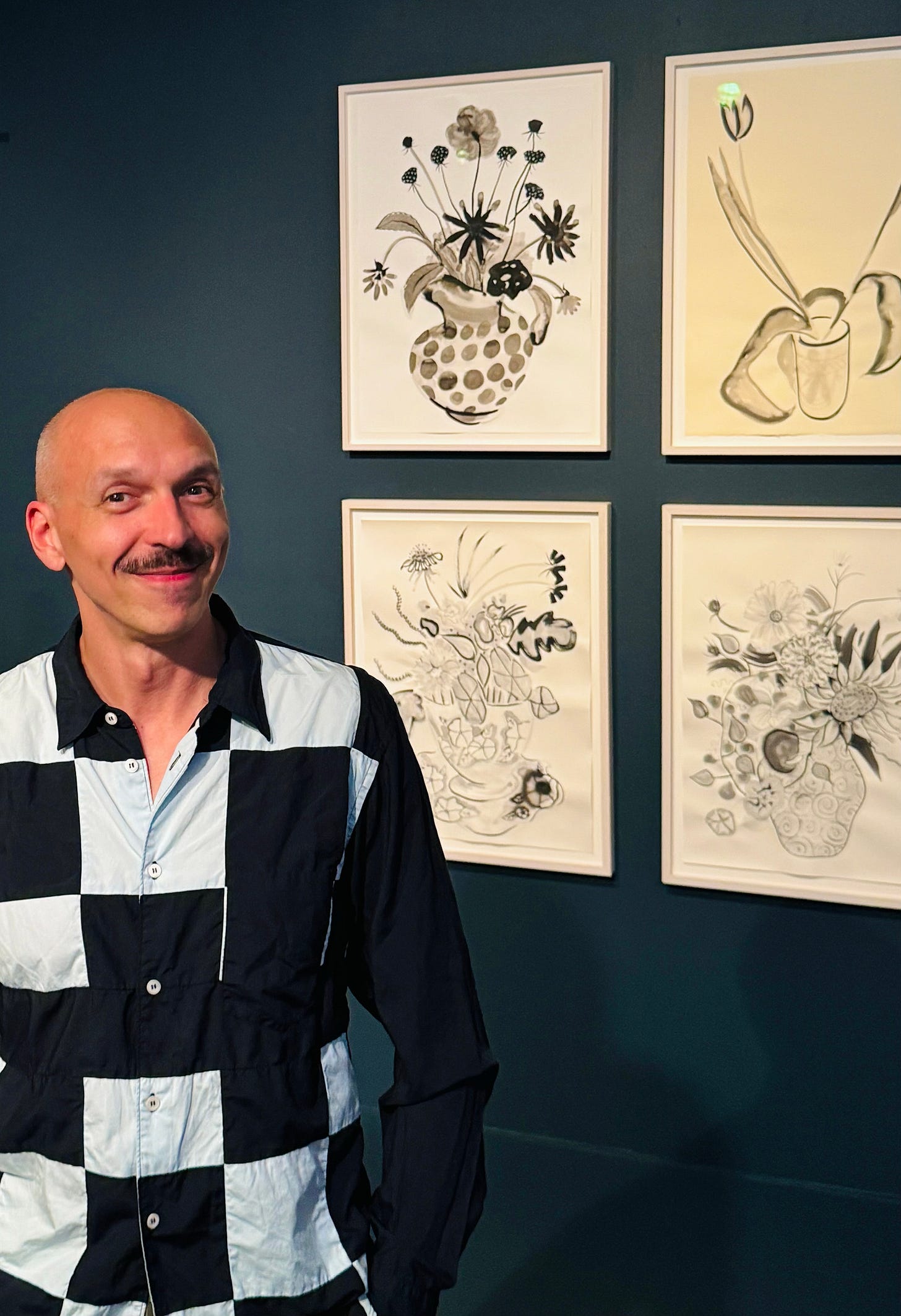
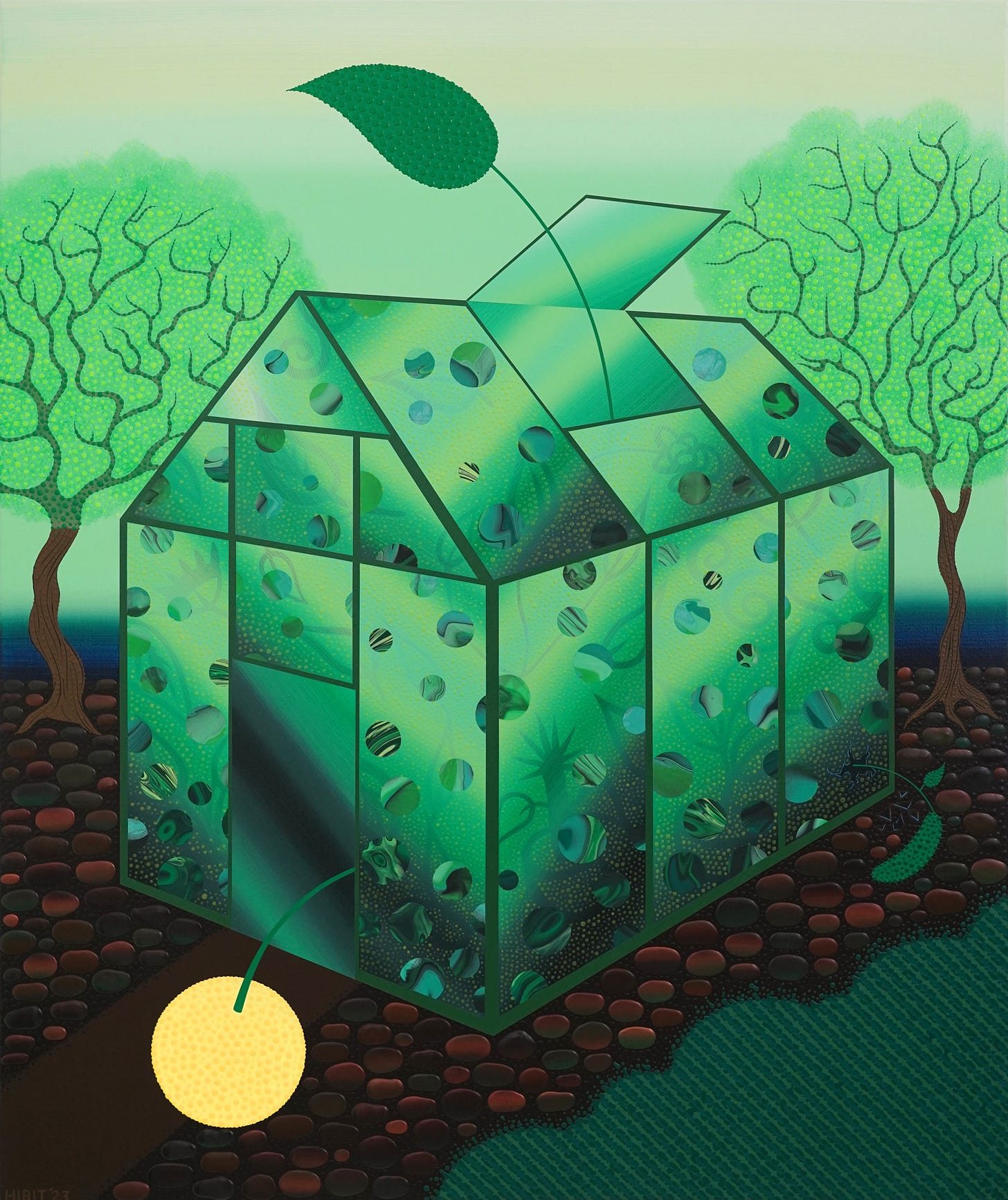
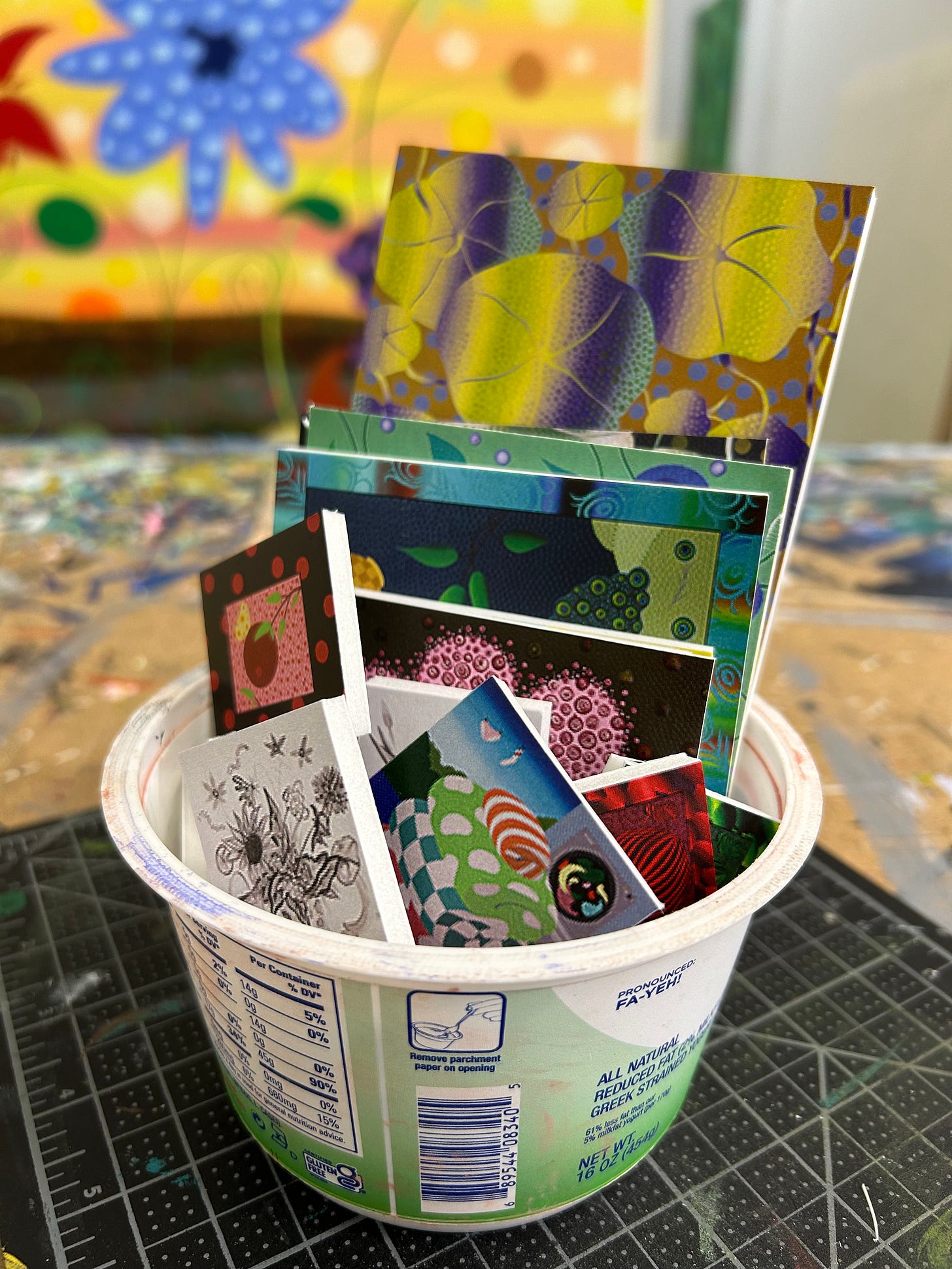
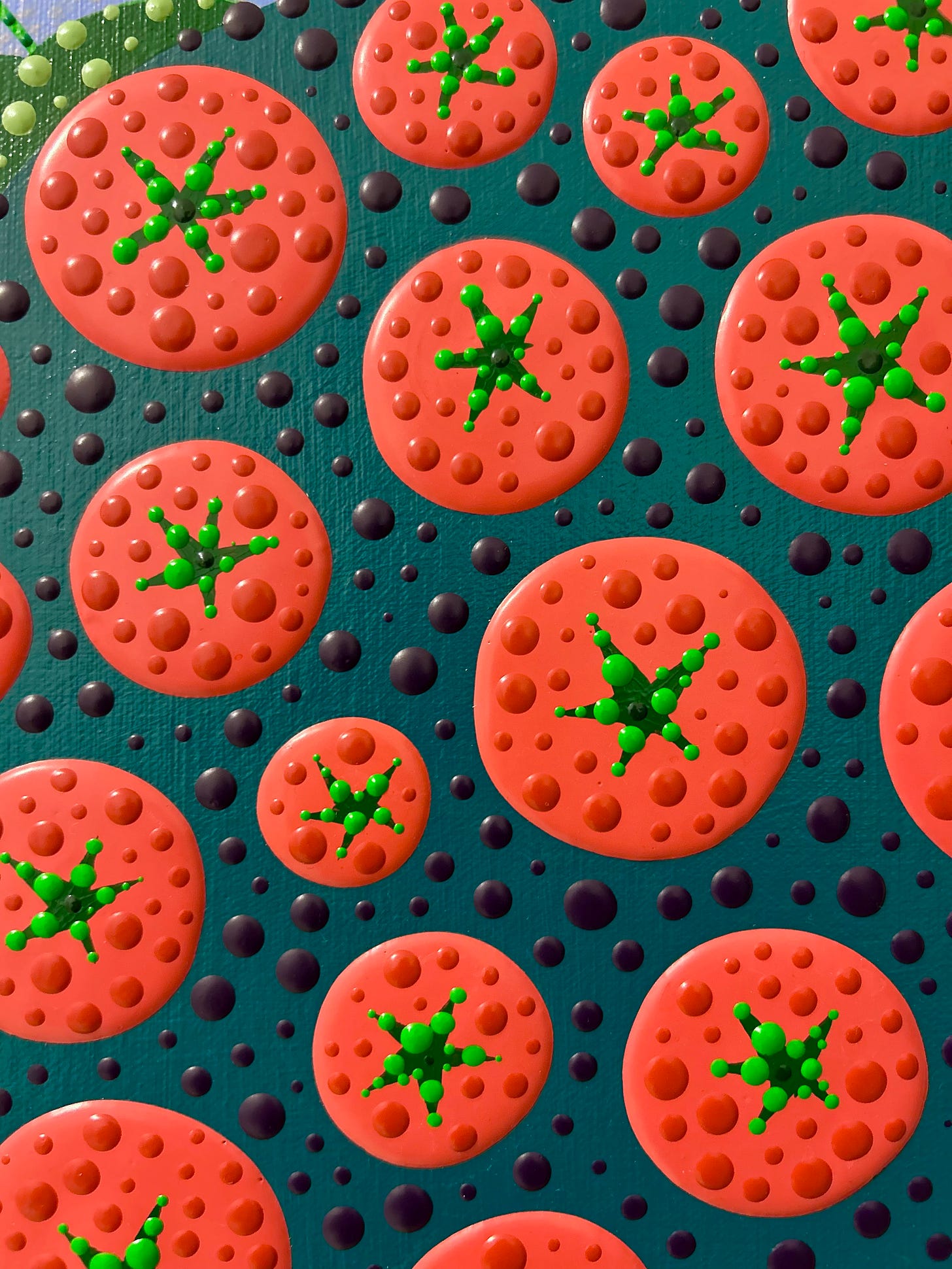
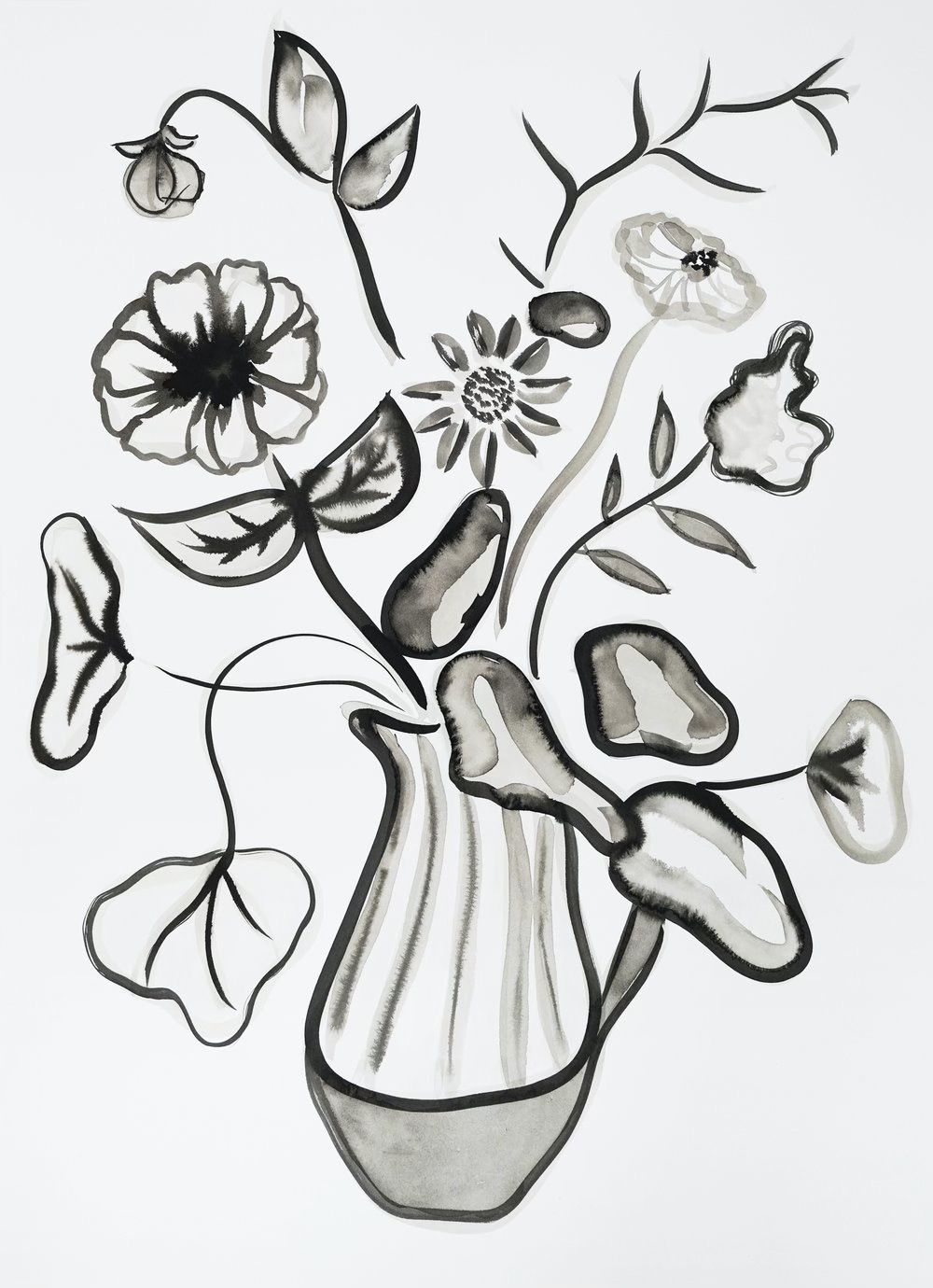
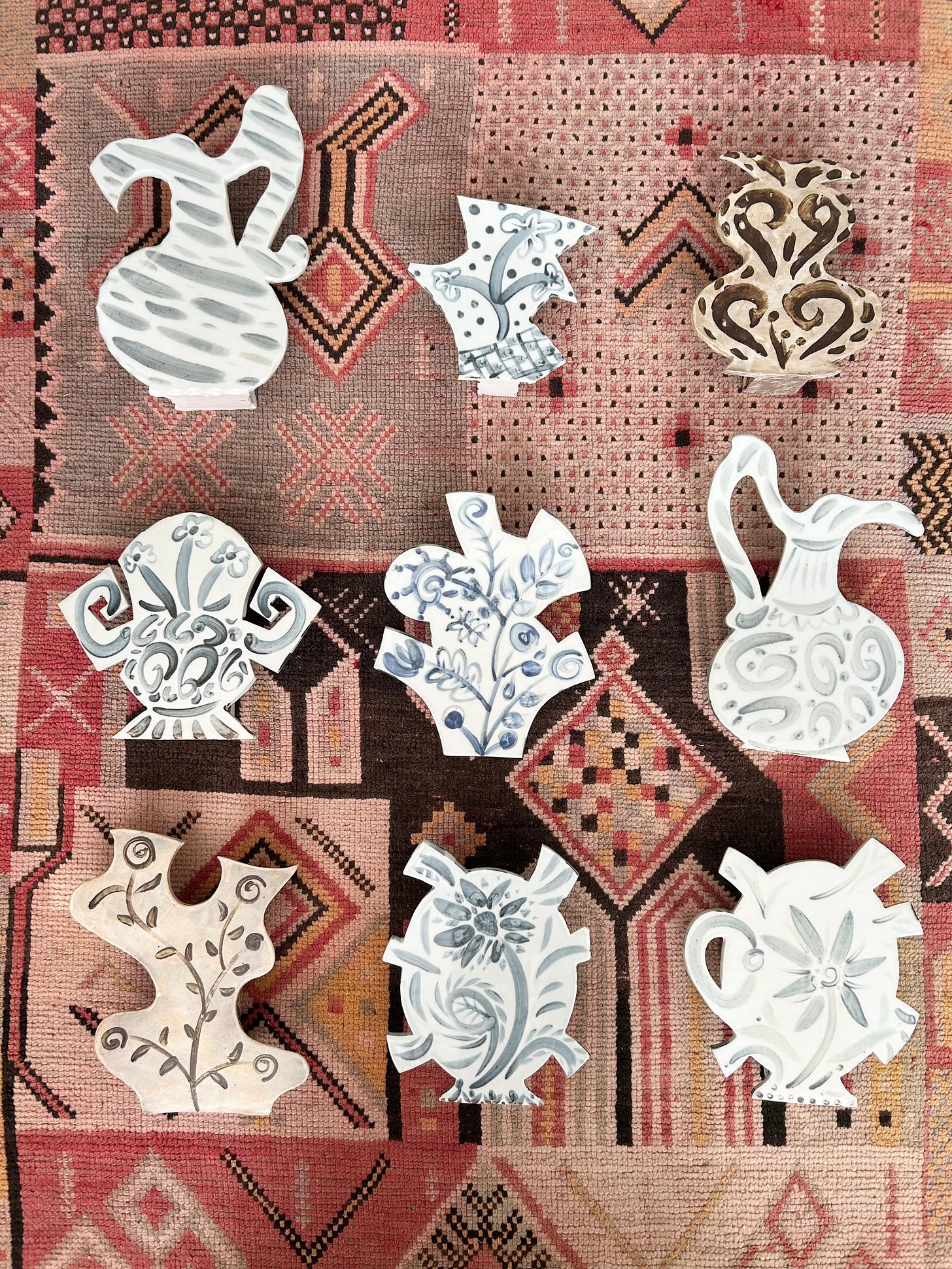
What a great interview! I've learned so much about an artist I thought I already knew well :)
Ahh it's so fun and encouraging to see artists who work in a variety of mediums. Also, Color Theory for Dummies ! That's so cool.